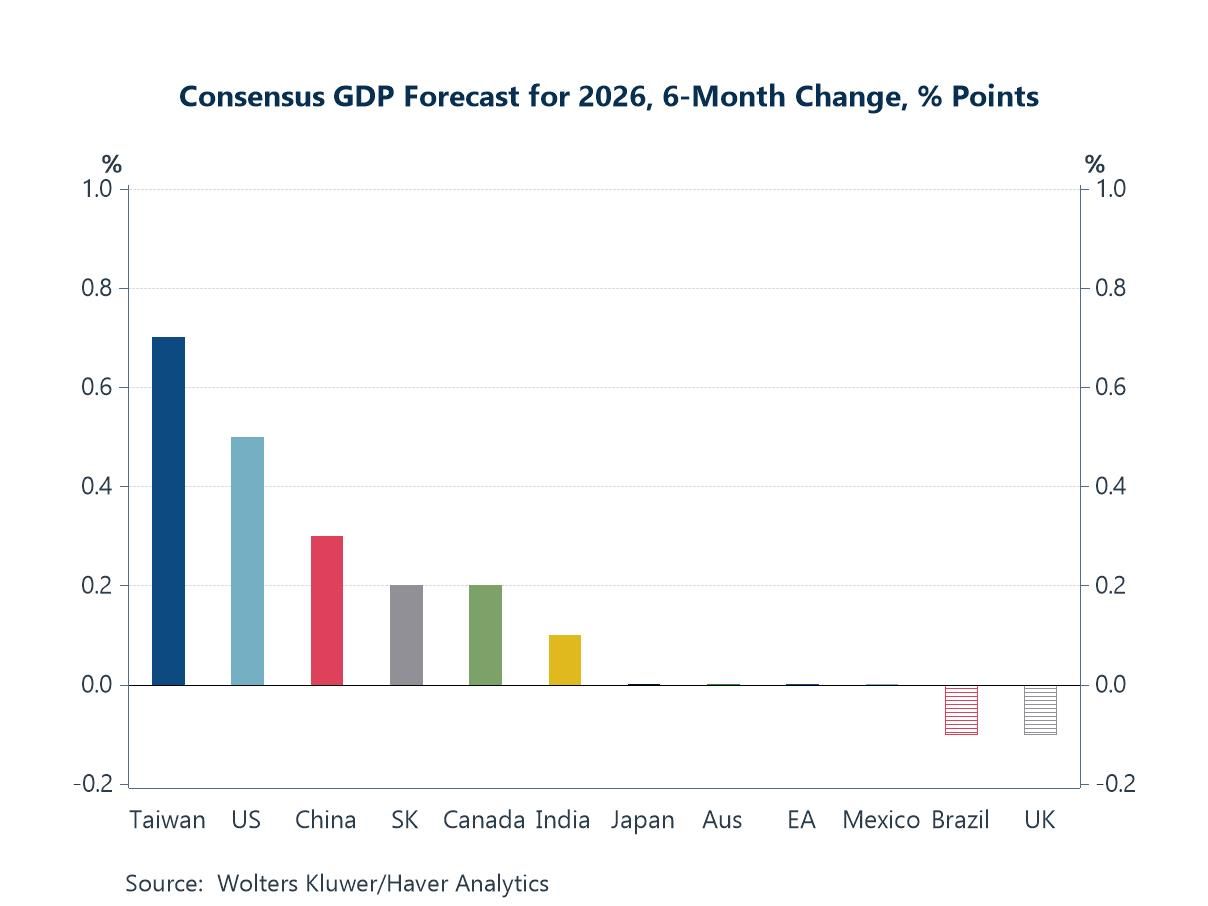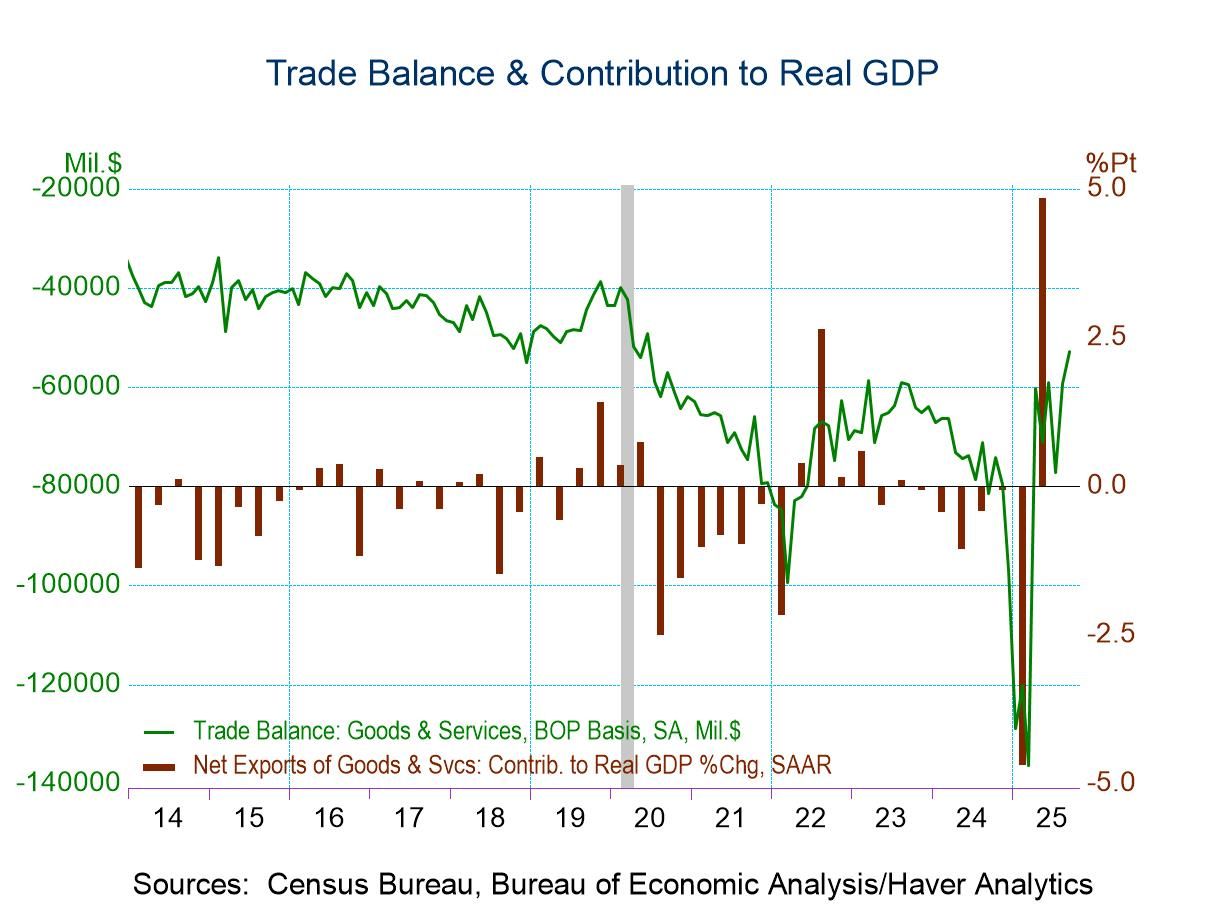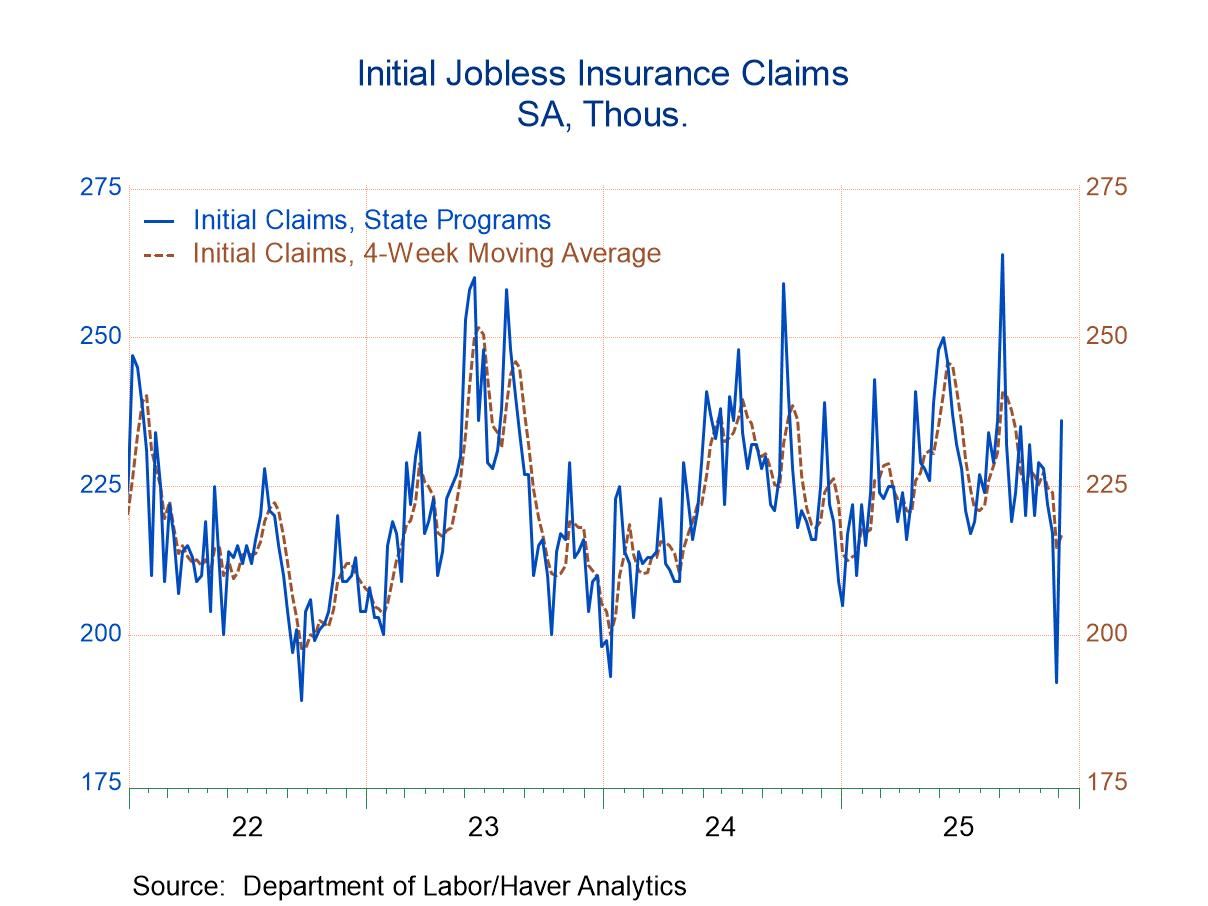Japan’s Trade Deficit Shrinks While Exports and Imports Both Contract

Japan's trade report posted sobering trends in May as Japan's deficit shrank from April, continuing a round of improvement as the trade deficit has improved in six of the last seven months.
Japan's trade flows tell a story of weakening global economic growth as well as of weakening growth in Japan. Japan's nominal export growth has declined over 12 months, 6 months, and 3 months. Imports also show declines over 12 months, 6 months, and 3 months. In neither case, is the nominal decline sequentially worsening, although in both cases the 6-month and 3-month pace of decline is at a greater rate than the 12-month decline.
Trade flows are contracting Real exports and real imports both fell in May, with exports falling by 4.6% and imports falling by 7.3%. Looking back at sequential trends of real exports, as for the nominal flows, there are declines over 12 months, over 6 months, and over 3 months. Once again, the declines over 3 months and 6 months are both greater than the pace of the decline over 12 months. This indicates a general deterioration in the pace of trade flow growth, but there is not a clear-cut monotonic decline in the growth rates. For imports, there are also negative growth rates over 12 months, over 6 months, and over 3 months. And - like for the nominal counterparts, and as in the case of exports as well - there's no clear-cut sequential trend deceleration in progress although over 6 months and 3 months the declines in growth rates are at a greater pace than the decline over 12 months.
Growth is slowing... These general trends indicate that global growth is weakening because Japanese export volumes are weakening. Import volume weakness suggests that Japan's domestic economy is weakening as well. Japan's nominal import declines show greater weakness than real declines because import prices are weakening faster, largely because of weakness in oil prices.
The yen is weakening In this environment, the yen has slipped against the dollar falling by 6.4% over 12 months, rebounding slightly to rise on balance over 6 months, then falling by 12.6% over 3 months. The real broad yen index, an index of the yen expressed in real terms and against a broad basket of currencies, mirrors the movement in the nominal yen against the dollar. This real, broad-based, measure is lower by 4.2% over 12 months, has a slight rebound over 6 months, then falls at a 6.9% annual rate over 3 months.

The global scene Globally economic conditions remain difficult. Central banks are generally raising rates. The ECB just executed a rate hike today and plans at least one more hike before the end of the year possibly at its next meeting. In the United States, the Federal Reserve interrupted its long string of aggressive rate hiking by putting a pause - or what's being called ‘a skip’ - in place, implying that the Fed has decided not to raise rates at the current meeting (on Wednesday) while emphasizing that it's not making a policy change to put rate changes on hold either. Instead, at the Fed’s meeting, members continued to look at more substantive rate hikes before the end of the year even while sitting on their hands in June. Nine of 18 Fed members are looking for two more rate hikes before the end of the year with another three members looking for more than two rate hikes before the end of the year. Of course, as always, the best laid plans can still go awry...
The outlook is cloudy With central banks still aggressive and inflation still high and stubborn, the outlook remains for interest rates to continue to rise through the end of the year, globally. Inflation has been stuck globally, while in the U.S., economic growth that has long been expected to slow down in the wake of protracted and substantial interest rate increases, has largely refused to do so. However, there are some hints that the economy is not firing on all cylinders; this is complicating the picture not just for monetary policy but for investors and for global policy as well.
China and global central bank policy China, Japan's largest trade partner, is also experiencing some interruptions in growth and has engaged a more accommodative monetary policy to deal with that. For now, ‘planet China’ is in its own orbit… But, all things considered, global growth is under pressure. Having inflation globally makes everything more difficult. The outlook for growth has been persistently wrong and more resilient than expected. At some point, that run of luck will end. Central banks are already worrying about that by trying to focus on raising rates ‘just enough’ to get them above inflation rates. They are trying to ‘sell’ the notion of inflation-fighting as being on the back of ‘keeping rates high for longer’ instead of just ‘ever higher,’ until something breaks. Central banks are trying to navigate between the ‘Scylla’ of high and enduring inflation and ‘Charybdis’ of looming recession. There is no telling if they can be successful; they still could fall prey to either of these events or even to both on differing timelines. Already inflation has lingered far too-high for too-long. Even Japan has begun to wonder if its inflation will prove to be reversible or not. Some see the reluctance of central banks to act with greater vigor in getting official rates above the prevailing inflation rate as a lack of will to control inflation at all. Some worry that not only will central banks not raise rates high enough to quash inflation, but that, when growth weakness, the pledge to keep rates high for longer will not be kept.
Robert Brusca
AuthorMore in Author Profile »Robert A. Brusca is Chief Economist of Fact and Opinion Economics, a consulting firm he founded in Manhattan. He has been an economist on Wall Street for over 25 years. He has visited central banking and large institutional clients in over 30 countries in his career as an economist. Mr. Brusca was a Divisional Research Chief at the Federal Reserve Bank of NY (Chief of the International Financial markets Division), a Fed Watcher at Irving Trust and Chief Economist at Nikko Securities International. He is widely quoted and appears in various media. Mr. Brusca holds an MA and Ph.D. in economics from Michigan State University and a BA in Economics from the University of Michigan. His research pursues his strong interests in non aligned policy economics as well as international economics. FAO Economics’ research targets investors to assist them in making better investment decisions in stocks, bonds and in a variety of international assets. The company does not manage money and has no conflicts in giving economic advice.





 Global
Global
